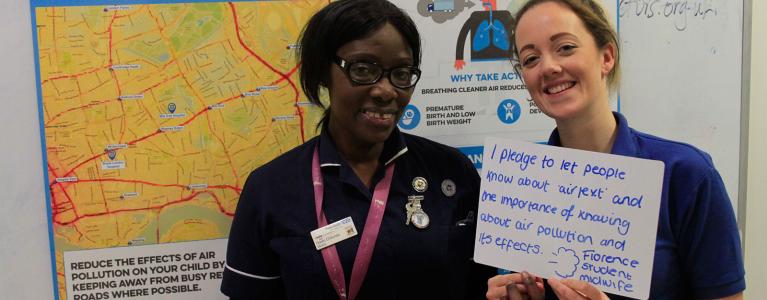
This is the second in our air quality fund series. Caroline Watson, Partner at Global Action Plan explains how she is helping Barts Health NHS Trust to get cleaner air …..
People are becoming more and more aware of air pollution. However, people are less aware of what steps they can take to reduce its impact. That’s why we started Cleaner Air for East London. It’s a partnership project between Global Action Plan, Bart’s Health NHS Trust, local councils and the Mayor of London. We’re giving east Londoners practical ideas to help them reduce their exposure to air pollution and live healthier lives.
It seems obvious when it’s pointed out. However, for many the link between their transport choices and air pollution is fuzzy. We found that staff driving Barts Health NHS Trust ambulances didn’t connect how their vehicle emissions were making things worse for the heart and lung patients they care for each day. By talking to drivers, we were able to make that causal link. They were given help on what steps they could take to reduce their emissions. This led to a big change in behaviour, with drivers’ engine idling dropping by 35% in the month after their training!
Car engines produce pollutants that cause breathing problems. That means it’s important that we work together to reduce car journeys around our hospitals. Since 22 June 2015, we've stopped 33g of PM10 and 1.44 kg of NO2 (two of the worst pollutants) from being released into the air.
Generally, people believe a message if it comes from a trusted source. Barts Health NHS patients are no exception. Through our project, we trained and engaged 291 Barts Health professionals. They in turn provided guidance and pollution advice packs to 6,000 patients on how to reduce their exposure to air pollution.
This included help with:
- Understanding the air pollution forecast
- Finding ways to travel on cleaner routes
- Avoiding rush hour where possible
Patients given the advice were a third more likely to take steps to reduce their exposure compared to other patients.
Given that most people encounter air pollution every day, it’s heartening to see that people are willing to listen and change their behaviour. Indeed, the Cleaner Air programme has already educated 11,000 people. By giving clear advice and using trusted messengers, we’ve helped people in east London to take action to breathe cleaner, healthier air.
We now hope to work across London to promote this further.
Find out more about the programme on the Global Action Plan website